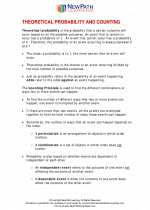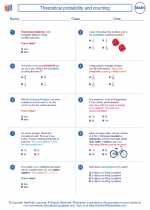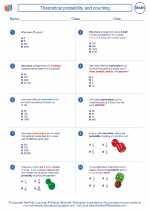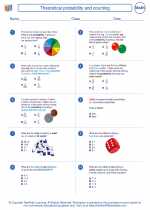Logarithm Explanation and Study Guide
What is a Logarithm?
A logarithm is the opposite of exponentiation. It tells you what exponent is needed to produce a certain number. For example, in the equation 10^2 = 100, the logarithm (base 10) of 100 is 2, because 10 raised to the power of 2 equals 100.
Logarithm Notation
Logarithms are typically written in the form: logb(x) = y, where:
- logb is the logarithm with base 'b'
- 'x' is the number being operated on
- 'y' is the exponent that 'b' must be raised to in order to equal 'x'
Common Properties of Logarithms
Some common properties of logarithms include:
- Product Rule: logb(xy) = logb(x) + logb(y)
- Quotient Rule: logb(x/y) = logb(x) - logb(y)
- Power Rule: logb(xn) = n * logb(x)
- Change of Base Formula: logb(x) = (loga(x)) / (loga(b))
Common Logarithms and Natural Logarithms
The two most common types of logarithms are:
- Common Logarithm: log10(x) - often written as just 'log(x)'
- Natural Logarithm: loge(x) - often written as 'ln(x)', where 'e' is the base of the natural logarithm
Applications of Logarithms
Logarithms are used in various fields such as science, engineering, finance, and computer science. They are used to measure the intensity of earthquakes (Richter scale), calculate compound interest, and in algorithms for data compression and cryptography.
Study Guide
When studying logarithms, it's important to:
- Understand the basic definition and notation of logarithms.
- Practice applying the logarithm properties (product, quotient, power, change of base).
- Familiarize yourself with common logarithms and natural logarithms, and their applications.
- Practice solving logarithmic equations and inequalities.
Remember to practice regularly and seek help from your teacher or tutor if you encounter difficulties.
.◂Math Worksheets and Study Guides Eighth Grade. Theoretical probability and counting

 Worksheet/Answer key
Worksheet/Answer key
 Worksheet/Answer key
Worksheet/Answer key
 Worksheet/Answer key
Worksheet/Answer key
